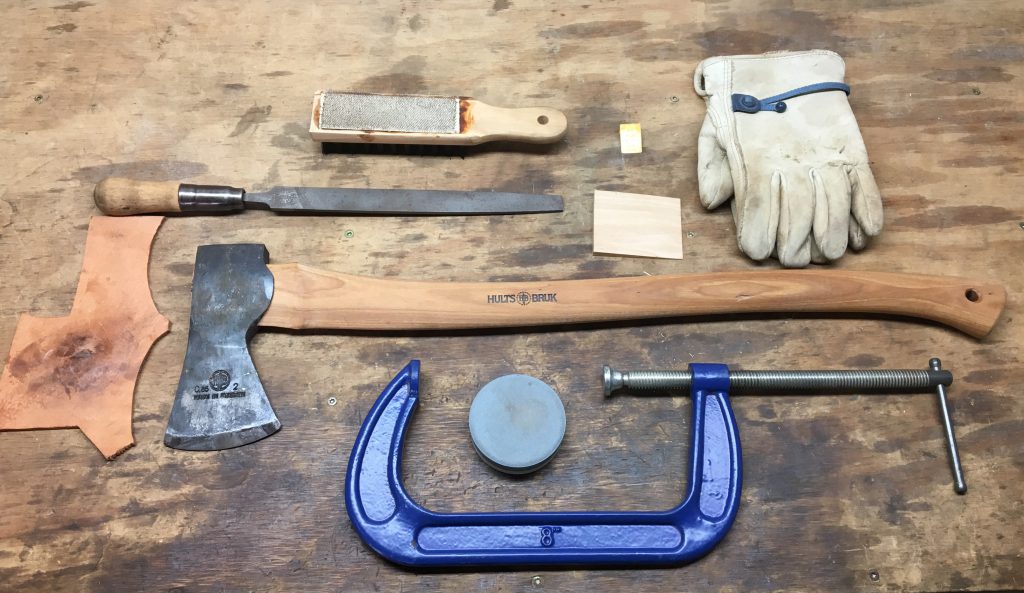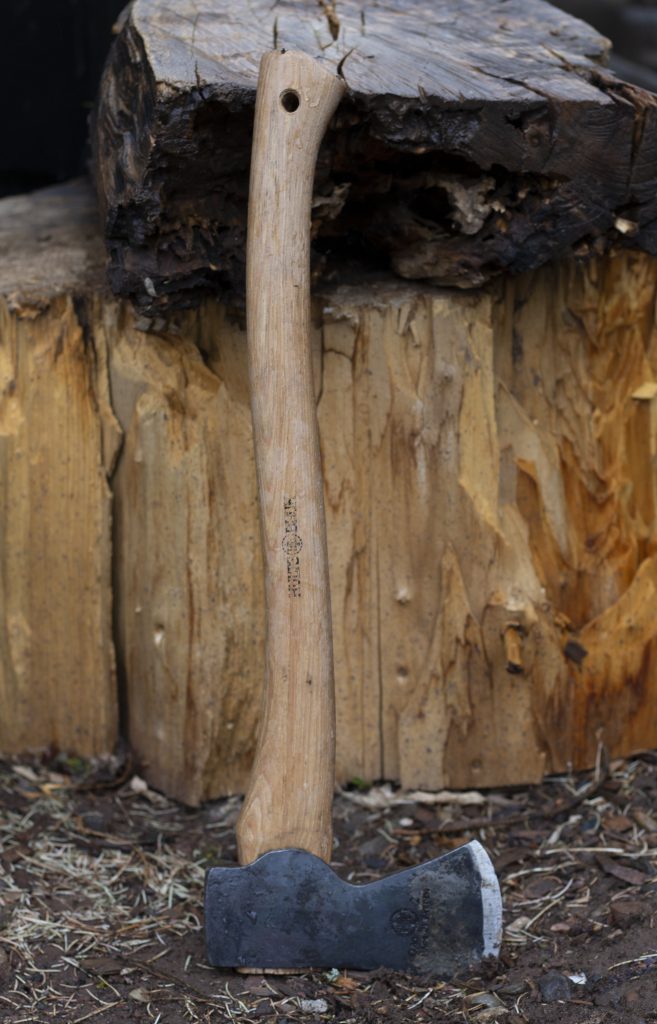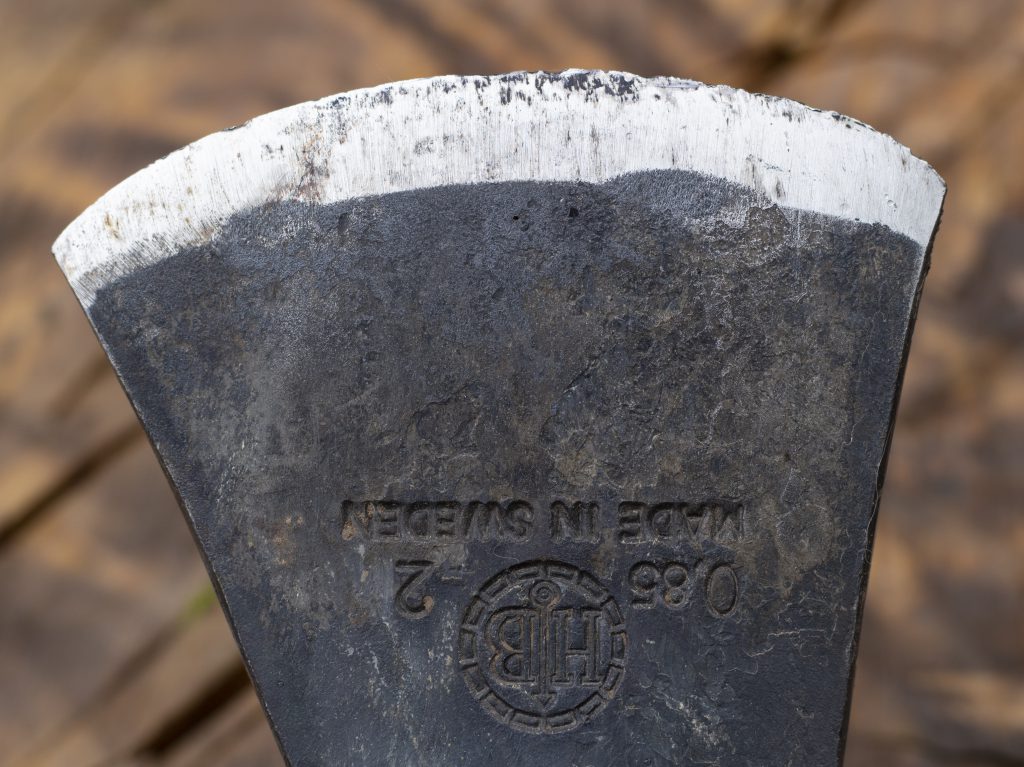4 simple tips to maintain & care for your Hults Bruk axe or hatchet
An axe is a simple tool, yet like any tool requires basic care. The more you love and use your Hults Bruk axe, the more care it requires. Below are some common axe maintenance problems, solutions and prevention tips to keep your Hults Bruk axe in tip-top shape and ensure it will last a long time.

An ounce of prevention provides a pound of cure. – Ben Franklin
The Problem: Rust
Corrosion is an axe’s worst enemy. When rust forms oxygen is pulling electrons away from the metal, causing it to disintegrate!

The Solution:
Don’t put your axe away dirty or wet, dirt and moisture accelerate corrosion. Use an oil to protect your axe head. Remove rust using vinegar and fine steel wool.
Prevention:
After using your axe, you must clean it and properly store the axe to prevent problems. First, clean the head of any sap or tannins, using steel wool and acetone on the head. Clean the handle of dirt and sap. If not too dirty, then you can use some extra fine steel wool and turpentine. If the handle is really dirty or has been out in the weather, then hand sand the handle until smooth. Afterwards, oil the handle with boiled linseed oil (BLO). Now it’s time to oil the axe head. Not only does the oil help protect the metal, but an oiled axe will cut deeper and faster, saving you time and effort when chopping wood. There are plenty of oils out there. I generally use a light oil such as Rem Oil for the head, but sometimes will just use BLO on the head and handle together. If your sheath is looking dry, give it a nice coat of leather oil inside and out. I like mink oil or Obenauf’s HD Leather Preservative. Once the axe is cleaned, thoroughly dried and protected with the sheath, the axe is ready for storage. If you’ve not followed these steps and your axe has a bit of rust, you can use white vinegar and steel wool to clean the rust away. If the entire axe head is rusted then it probably needs to soak in white vinegar. In which case you’ll want to remove the handle before soaking, or risk damaging the handle.

The Problem: Dull or Chipped Blade
A dull or chipped axe is both ineffective and dangerous. Using a dull axe requires more force because rather than cutting, you’re pressing through the wood. Dull, damaged axe blades are prone to glance or bounce, making the axe harder to control.
The Solution:
The core of axe maintenance is sharpening. Even the best steel will become dull over time. Sharpening an axe is a simple procedure depending on the wear on the blade. Luckily we’ve got a guide to walk you through sharpening techniques to keep your axe in good service – click here.
Prevention:
With use, any axe will become dull. However you don’t have to speed up the process. Avoid splitting or chopping into the ground. When you split wood directly on the ground, you risk hitting the ground or worse. A splitting block not only reduces the odds you’ll hit the ground and damage the axe blade, but it also keeps the axe further from your feet. Try to avoid cutting knots in the wood, especially in green wood. If gathering wood from the ground, avoid cutting into bark that contains sand, rocks and grit. Avoid micro corrosion by drying and oiling the axe blade after use.

The Problem: Warped or Shrunk Handle
Made with solid natural hickory, Hults Bruk axe handles will last a long time with proper treatment. Axe handles left exposed to weather may shrink, splinter or split, or become warped if the axe is stored leaning against a wall. When left outside in the elements, the handle can become wet, dry or experience freezing – all of which can cause the handle to swell, shrink or warp.

The Solution:
If your axe handle is warped, replacement might be the best or only option. Depending on the severity, some people can fix a warped axe by steaming or wetting the handle then bending it back into shape using clamps and weights. This might work for some warped handles, but it’s a time extensive process with varying results.
Prevention:
Store axes in a dry place, but not so dry or warm that the handle will shrink. Whenever possible store axes inside a climate-controlled building. When transporting axes, keep them in the vehicle or inside a box where it is out of the elements. Keep your handle treated with BLO and be sure to keep the handle oiled at the head to prevent any shrinkage. To avoid warped handles, never stack heavy objects on top of the axes or store an axe leaning against a wall.
The Problem: Mushroomed Poll
Using an axe as a hammer or splitting wedge can mushroom the poll (back of the axe head). Mushrooming occurs when the poll deforms, pushing steel out and hanging over the sides of the head. A mushroomed poll is an indication the axe has been abused and warrants inspection for further damage. Using an axe poll as a hammer can distort the eye and cause the head to loosen or crack.

The Solution:
A slightly mushroomed axe might be fixed with a file or grinder, but might require a lot of work to correct.
Prevention:
As tempting as it may be, Hults Bruk axes are not designed to strike against other steel objects. Hults Bruk axes are expressly forged for the purpose of cutting wood. It’s best to leave the hammering jobs for a sledgehammer, hammer or wedge.
For more information on how to care and maintain your Hults Bruk axe, check out our instructionals on how to select a new Hults Bruk axe handle, and how to hang an axe handle.

